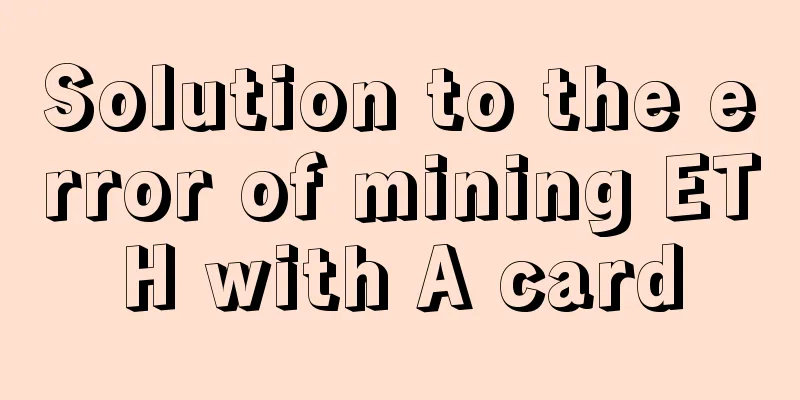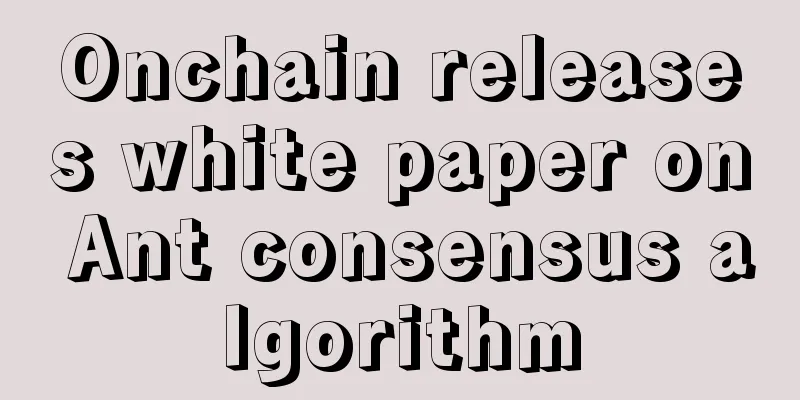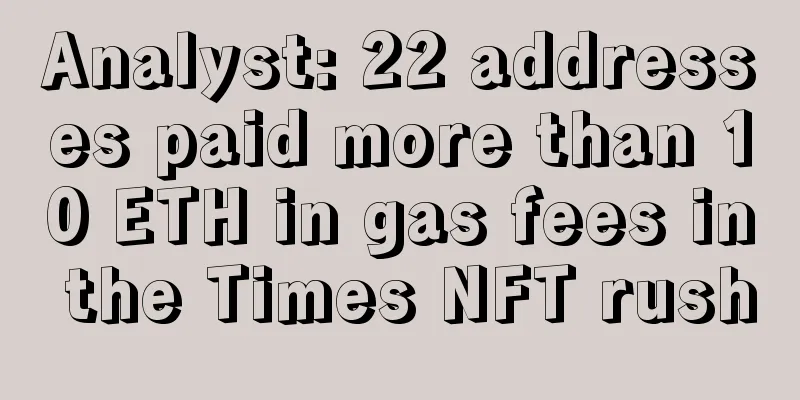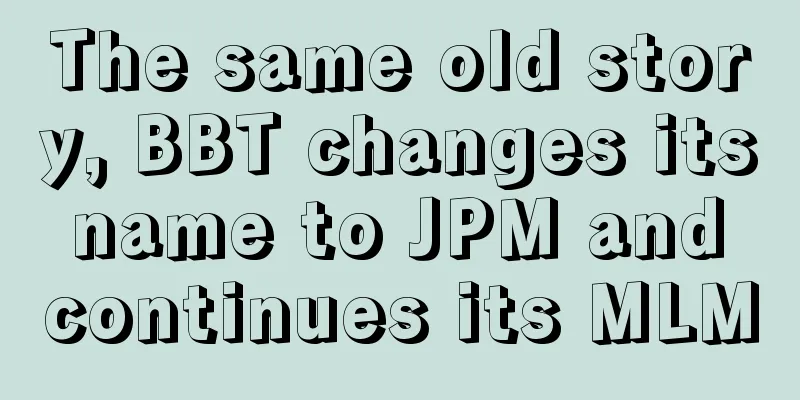Will there also be MEV in eth2? How will the validator’s earnings be affected?
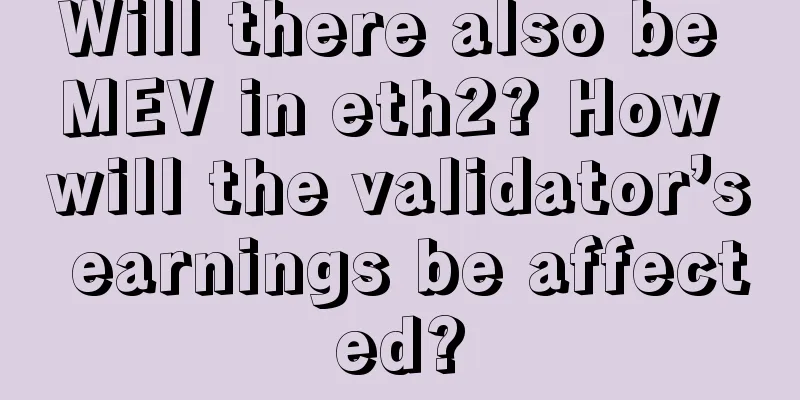
|
Since the transaction ordering process in Ethereum 2.0 will be the same as the current PoW Ethereum, we have reason to believe that MEV opportunities will still exist in Ethereum 2.0. Ethereum will soon transition from PoW to PoS consensus protocol. Developers have been working on this transition for several years and it is being done in multiple steps. The first step was the launch of the beacon chain in December 2020. The beacon chain is now live and at the time of writing, there are more than 160,000 validators on the beacon chain, equivalent to about 5 million ETH staked. The second step, the "big merger", may occur in early 2022. Although there are still many details to be resolved beyond this step, enough details have been resolved about PoS Ethereum (ie eth2) that we can infer the maximum extractable value (MEV, Maximal Extractable Value, formerly known as "miner extractable value") in eth2. In this article, we will study transaction ordering in eth2 and analyze the increase in validator benefits brought about by MEV value extraction. We find that MEV will significantly increase the rewards received by validators, but it may also increase the inequality between eth2 participants . We will also discuss qualitative aspects of MEV in eth2, such as the potential dynamics between the largest stakeholders such as exchanges and validator pools (i.e. staking pools). This article was co-authored by Alex Obadia and Taarush Vemulapalli. The full analysis document can be found at: https://github.com/flashbots/eth2-research 01. Overview of eth2 Currently, Ethereum consensus is achieved by miners running mining hardware that is optimized to better solve PoW challenges. The transition from PoW consensus to PoS consensus means that the Ethereum network will be protected by validators (rather than miners). Each validator node needs to stake a deposit of 32 ETH and reach a consensus on the state of the beacon chain through voting. There is an economic incentive for validators to do this, that is, the good behavior of the validator will be rewarded, and offline or malicious behavior will be punished (confiscation). Currently, the beacon chain runs in parallel with the eth1 chain, and the beacon chain has been running successfully since December 2020. The "big merge" will merge the beacon chain with the current eth1 chain. In this article, we will use " eth1 " to refer to the Ethereum execution engine that contains blocks and transactions; " beacon chain " to refer to eth2's new underlying PoS consensus mechanism; and " eth2 " to refer to the merged Ethereum authoritative chain, which includes the eth1 execution engine and the beacon chain used to achieve consensus . eth2 reaches consensus in increments of 6.4 minutes (called an epoch). Each epoch contains 32 slots, each slot lasts 12 seconds, and each slot represents a chance for a block to be added to the beacon chain. Under normal operation, each slot will produce a block, but reasons such as validators being offline may cause some slots to produce 0 blocks. For each epoch, all validators are pseudo-randomly assigned to propose blocks or attest to blocks proposed by other validators . The validator who proposes a block is called a " proposer " and the validator who attests a block is called a " certifier ". There will be only one proposer and multiple attesters during each slot, and these attesters will be responsible for attesting all the information in the block, including data from eth1 and data from the beacon chain. Attesters are rewarded by correctly voting on the current values of "three aspects" of the beacon chain: the head of the blockchain (i.e. the top block), the attested checkpoint, and the finalized checkpoint. Note: The last slot of each epoch is called a checkpoint. When two consecutive epochs are justified, the previous epoch can be considered finalized. For details, please refer to: Ethereum 2.0: How to achieve finality? 02. MEV in eth2 MEV (Maximum Extractable Value) is the total possible value that a block proposer can obtain by reordering, censoring, or jamming transactions in their proposed block . To understand transaction ordering in eth2, let’s first look at the inner workings of the software used to order transactions (i.e., the eth2 client). 1. eth2 client Since eth2 is essentially two chains merged together (ie, eth1 chain and beacon chain), it is not surprising that the eth2 client consists of two "sub-clients": one is the execution engine client and the other is the consensus client. It is worth noting that the current PoW Ethereum client (ie, eth1 client ) will continue to exist in eth2 and run with the beacon client , with different divisions of labor. Among them, the eth1 client in eth2 is the current PoW Ethereum client stripped of its consensus responsibilities, and only focuses on the transaction pool, eth1 execution and EVM of the eth1 chain ; while the beacon client is responsible for consensus and assigning validators (such as proof and proposal of beacon blocks). The two clients run in parallel , each maintaining its own p2p network stack (the beacon client maintains libp2p, and the eth1 client maintains devp2p). An eth2 client might look like this modified diagram (from Danny Ryan’s article [1]): Figure 1 2. Block Proposal for eth1 As in current PoW Ethereum, eth1 clients in eth2 will maintain a local transaction pool (mempool) containing transactions received from its p2p network. As described in the Rayonism specification [2], beacon clients will interact with eth1 clients to form an eth1 block . While the details of the communication path (between the two clients) in the specification may change in production, the general approach is likely to remain the same:
Figure 2 Although the way consensus is reached in eth2 has changed, the ordering of transactions within each eth1 block in eth2 is the same as it is today , implemented in software that orders transactions (such as the PoW Ethereum client Geth) and in the p2p transaction network. 3. Does MEV exist in eth2? Since the transaction ordering process in eth2 will be the same as the current PoW Ethereum, it is reasonable to assume that MEV opportunities will still exist in eth2 , just as we see in PoW Ethereum today. The difference is who has the ultimate control over the ordering, that is, in eth2, validators (not miners) will have control over transaction ordering , and validators are selected to propose beacon blocks, which will contain a new eth1 block queried from the eth1 client. Figure 3 This means that technologies such as Flashbots’ MEV-geth (a modified eth1 client software designed to optimize MEV extraction) that allow eth1 transaction senders to achieve their desired transaction ordering by paying tips to block proposers (and transaction sorters) will still exist. With this proposition in mind, we can now think about how much money validators can make by running software like Flashbots? 03. Validator Reward Mechanism While MEV is notoriously difficult to measure, we use Flashbots data [3] as a lower bound on the minimum additional revenue an eth2 block proposer can earn through MEV. This is a revenue lower bound because only a small fraction of MEV activity occurs on Flashbots. One caveat to this analysis is that it considers MEV based on the staking benefits provided by the eth2 protocol, but does not include the transaction fee rewards that block proposers can receive. The main reason for not including these transaction fees is that it is difficult to predict how much proposers will be able to earn from transaction fees after EIP-1559 (EIP-1559 will introduce a basefee destruction mechanism). 1. Ideal situation Let us first consider an ideal case where all validators participate perfectly and receive maximum protocol rewards (i.e. there are no large-scale slashings), and all staking rewards are distributed evenly because all validators propose the same number of blocks over an infinite timescale. Figure 4: The Y-axis represents the rate of return, and the X-axis represents the number of validators. The blue line represents the ideal annual rate of return for validators without considering MEV; the yellow line represents the ideal annual rate of return for validators with MEV. The blue vertical dotted line represents the number of validators at the time of writing (approximately 160,000 validators). Based on the current number of validators (160,000 validators), we found that MEV can increase validator rewards by 75.3% , or provide an APR (annualized interest rate) of 12.83% , which is higher than the 7.35% APR income from staking ETH when considering MEV. One conclusion that can be drawn from this is that higher validator rewards mean that more ETH holders will be attracted to become validators, which in turn means that Ethereum has a larger validator set and becomes more secure . As more validators come online in the near future, the increase in validator returns based on MEV will be less significant, for example, the rewards at 250,000 validators (i.e. 8 million ETH staked) will only increase by 60%. As mentioned above, this analysis does not take into account how much transaction fees validators will receive, as this will reduce the relative impact of MEV on returns. However, these data are still useful when compared to the additional MEV rewards currently earned by PoW miners through Flashbots (currently around 5.6%). This stark difference stems from the significant drop in the PoS issuance rate. This suggests that in eth2, MEV extraction will be more worthwhile than in eth1, and stakers may strongly promote staking returns achieved through MEV. 2. Take time & REV allocation into account On any finite timescale, validator rewards are variable because there is a protocol-specific reward for proposing blocks, and because some validators will be lucky enough to propose more blocks than average, while some less lucky validators will propose fewer blocks . For example, if there are 100,000 validators in the network, the average number of blocks proposed by each validator per year is 26 blocks, while the unluckiest 1% of validators have a chance to propose at most 15 blocks, and the luckiest 1% of validators have a chance to propose at least 39 blocks. See the figure below: Figure 5 Based on this logic, we can plot the variability of validator staking rewards (not considering the impact of MEV) based on 3 different levels of block proposal "luck" (i.e. the luckiest 1% of validators, the unluckiest 1% of validators, and the average validator): Figure 6: The Y-axis represents the rate of return, and the X-axis represents the number of validators. The green line represents the annual staking rate of return that the luckiest 1% of validators can obtain without considering MEV; the red line represents the annual staking rate of return that the unluckiest 1% of validators can obtain without considering MEV; the yellow line represents the average annual staking rate of return that validators can obtain without considering MEV. The blue vertical dotted line represents the number of validators at the time of writing (approximately 160,000 validators). Now, by adding the average extracted value ( REV , or Realized Extractable Value) per block recorded on Flashbots [4], we can compare the validator returns for these three different levels of block proposal “luck” with and without considering MEV value: Figure 7: The green line shows the annual rate of return that the luckiest 1% of validators can obtain when MEV value extraction is included; the red line shows the annual rate of return that the unluckiest 1% of validators can obtain when MEV value extraction is included; the yellow line shows the average annual rate of return that validators can obtain when MEV value extraction is included. The bottom thick line is the annual rate of return that validators can obtain for staking in the three types of block proposal "luck" without considering MEV, but because the differences between the three lines in the above figure are too small, the three lines overlap. The three curves in the above figure (Figure 7) representing the annual staking yield of validators brought about by the three "luck" levels without considering the MEV value are almost overlapping and difficult to distinguish. This shows that the extraction of MEV value has widened the inequality of benefits between validators brought about by the "luck" of block proposals . Furthermore, the distribution of REV is uneven , which can be seen as a second dimension of “luck”, where some blocks have larger MEV rewards than others . For example, here is the (long-tail) distribution of REV rewards received by miners using Flashbots’ MEV-Geth mining in the last 100,000 consecutive Ethereum blocks (starting at block height 11,600,000): Figure 8 In the above figure (Figure 8), we truncated the X-axis (the actual REV value obtained by miners in each block) to 3 ETH, but in fact, in our sampling, miners can obtain up to 101 ETH of REV value. Using the distribution of Flashbots miner rewards to represent the distribution of REV, we can define and draw annual yield curves for 3 luck levels based on the income obtained by the unluckiest 1% validators, the average validators, and the luckiest 1% validators from MEV rewards: Figure 9: The green line represents the annual rate of return that the luckiest 1% of validators can obtain when MEV value extraction is included; the red line represents the annual rate of return that the unluckiest 1% of validators can obtain when MEV value extraction is included; the yellow line represents the average annual rate of return that validators can obtain when MEV value extraction is included. The blue vertical dotted line represents the number of validators at the time of writing (approximately 160,000 validators). The previous graph (Figure 7) showed us that MEV magnified the inequality in benefits among validators caused by the "luck" of block proposals; this graph (Figure 9) shows that the uneven distribution of REV is a greater source of inequality in benefits among validators , especially considering that the Y axis in this graph (Figure 9) has grown to 600%, while the Y axis in Figure 7 is only 80%. However, in reality, validators will pool resources in validator pools (also known as staking pools) to eliminate differences in validator earnings from block proposal luck and uneven distribution of REV. But this means that the impact of MEV on validator earnings may inhibit people from running validator nodes independently, making it more attractive to join a validator pool in terms of financial incentives, which may lead to the centralization of network verification . Ultimately, we worry that MEV could exacerbate oligopolistic dynamics in eth2, as entities with the most ETH staked grow faster than those with less ETH staked (validator pools). This would make democratization of MEV extraction particularly important in eth2 to keep consensus voting power decentralized. 04. New consensus participants While the above quantitative analysis is important to start thinking about MEV in eth2, this article would be incomplete without a qualitative analysis of eth2 consensus participants. As mentioned earlier, in eth2, miners and mining pools will be replaced by entities that control large amounts of ETH (such as exchanges, protocol treasuries, investment funds, and validator pools). This can already be seen through the distribution of eth1 deposit addresses of current eth2 validators displayed on the beacon chain browser beaconcha.in: Above: Distribution of eth1 deposit addresses of all eth2 validators. It can be seen that a large number of eth2 validators are staking through the addresses of entities such as several exchanges and staking pools, which means that these entities control a large proportion of eth2 voting rights . It is worth noting that this pie chart does not distinguish between the ultimate entity that controls consensus voting power and the infrastructure it runs. While the centralization of eth2 consensus voting power is worrisome, the centralization of infrastructure may not be, and PoS economic incentives encourage the decentralization of infrastructure to minimize the associated slashing risk. Specifically, this means that exchanges like Kraken that control large amounts of eth may be able to reduce the risk of significant slashing by spreading the deposits across many infrastructure providers, running eth2 nodes on different hardware in different regions, rather than taking on this massive infrastructure operation task in-house. 1. Exchanges The most notable change in eth2 is that exchanges have become the largest ETH holders , and therefore the largest validators . Centralized companies such as Coinbase, Binance, and Kraken are likely to control the largest number of validator slots . These participants are subject to different rules than mining pools, which has many impacts on their reputation. This difference may have new effects on the validator landscape compared to the miner landscape, and may affect the activities that validators participate in, such as the type of MEV they earn. Interestingly, in addition to participating in eth2 staking, these entities are also involved in multiple activities that may bring new opportunities for synergy between the existing services provided by these exchanges and MEV value extraction. These activities include accelerating transactions, providing private withdrawals before withdrawals are packaged on-chain, and reducing on-chain transaction fees through crypto-native payments for order flow. Such services may initially be cutting edge, and their benefits may mean that users migrate to exchanges that offer these services, potentially harming exchanges that do not or cannot offer these services for regulatory reasons. Additionally, the potential vertical integration of exchanges in the MEV game (e.g. exchanges running their own bots to submit transactions to their own validator nodes) is a concern that we believe should be further studied. 2. Validator Pool Another important shift in eth2 is the rise of validator pools (also known as "staking pools"), which provide benefits such as lowering the minimum ETH amount required to participate in eth2 staking (users need to stake 32 ETH to run a single validator node themselves, while joining a validator pool can provide less than 32 ETH because the validator pool will pool all users' ETH for staking), building validator nodes for customers, eliminating variables due to the "luck" of block proposals (which affects MEV+ transaction fee income), and providing additional services such as staking derivatives (thanks to the base of funds they manage). An interesting phenomenon is the emergence of meta-pools, such as Rocketpool and Lido. These entities are connected to many validator pools and are likely to be a large source of stake for these validator pools, and therefore can influence the behavior of validator pools, such as affecting the type of MEV extraction they participate in and the profit share they provide to stakers. These meta-pools often offer staking derivatives . An example of this is providing users with a liquid tokenized version of their locked ETH staking deposits, which they can use in the (Ethereum) network using this derivative. This will further increase the benefits of validators beyond the MEV value by allowing users to use their locked ETH again in DeFi in the form of derivatives. 05. Open-ended questions Our exploration of MEV in eth2 has revealed many open questions that we plan to investigate in the coming months. Here are four of them: 1. eth1 block proposer market Since eth2 actually has two clients to run (eth1 client + beacon client), it is likely that independent validators will choose to default their eth1 nodes to a service provider such as Infura, as the overhead of running an eth1 node is very high. This may hint at the beginning of the separation of eth1 and eth2 node operators. Assuming such a dynamic emerges, we can imagine a market for eth1 node operators that run high-performance hardware and MEV simulation software to meet the needs of eth2 block proposers. 2. New limitations in optimizing MEV search MEV opportunities such as price arbitrage and liquidations still exist in eth2 , but the system for extracting this MEV value has new parameters that may modify or introduce constraints on MEV extraction. For example, eth2's block time is fixed at 12 seconds, rather than the variable block time of eth1 currently, and the block proposer's slots are assigned at the beginning of each epoch, which means that proposers will have a maximum of 6.4 minutes to calculate their tasks (of course, proposers assigned slots at the beginning of the epoch do not have that much time). This not only provides validators with potentially more time to run calculations on the eth1 client transaction pool for optimal MEV extraction, but also makes simulation and execution easier due to the predictability of block times. This means there are longer, more predictable time intervals to calculate and execute MEV extraction strategies, allowing for more complex, computationally intensive MEV extractions. 3. Changes in the leader selection mechanism Validators will know in advance whether they need to propose a block (unless it is the first slot of a new epoch). They can even (although with low probability) propose multiple blocks within an epoch. How does the determination of the identity of the block proposer change the dynamics of MEV value extraction? And if it is determined that multiple blocks will be proposed within a block, how does this affect the dynamics of MEV extraction? In particular, large validator pools/exchanges are most likely to have (be assigned to) multiple consecutive slots within the same epoch. 4. L2s & Sharding Most of this article assumes that the block content of eth1 will remain as it is today. However, in reality, a lot of transaction flow will be transferred to L2s, and Ethereum L1 will be used as a data availability layer. Zk-rollups and optimistic rollups will be responsible for submitting batched transaction data to L1. This would intuitively reduce the benefits validators receive from MEV . However, this is difficult to predict, as the world of multiple L2s brings additional complexity that may open up new forms of MEV (i.e. cross-L2 transactions, cross-L1-L2 transactions). Similarly, as eth2 continues to develop and sharding goes into production, the ordering of shards within the beacon block may become important, and MEV may become an incentive mechanism to implement Vitalik’s proposal to "stagger shard blocks to achieve faster block times" [5]. Thanks to Terence Tsao, Raul Jordan, Alejo Salles, Luke Youngblood, Tomasz Stanczak, Lakshman Sankar, Barnabe Monnot, Caspar S, and Viktor Bunin for valuable contributions and editing of this article. Thanks also to other members of the Flashbots team for discussions. |
<<: Fed's balance sheet exceeds $8 trillion for the first time
>>: What exactly is the much-anticipated Bitcoin Taproot, and how will it change Bitcoin forever?
Recommend
The momentum is very strong and you have a good appearance when you are young.
When we are young, we are usually just starting t...
Famous American rapper announces “significant investment” in Bitcoin
Bitcoin has been trending on Twitter for the past...
What you need to know about PoS
As the merge gets closer, more news will start to...
A brief analysis of Ethereum 2.0 technology: Beacon chain and sharding
Just last July 31, Ethereum, the second largest c...
Is a nose that brings prosperity to a husband a nose that is turned upside down? How is the fortune in middle age?
The influence of the nose on a person's fortu...
Physiognomy reveals what influences your ability to lose or gather money
Physiognomy reveals what influences your ability ...
Analysis of the face of a woman with red scorpion What does a woman with red scorpion look like
Everyone hopes to have good luck in love, but too...
What kind of man will abuse his children and wife?
As a man, the most basic responsibility is to pro...
What is coming will come, Ethereum ProgPoW mining algorithm change is considered to be included in the Istanbul hard fork upgrade
ISTANBUL — The code to be implemented in ethereum...
What does a broken palm on a woman's right hand mean?
Each of us has our own palm lines, and each of us...
KPMG releases China's top 50 financial technology companies for the first time, with many blockchain companies on the list
KPMG China released its first list of China's...
Which is the lifeline? How to read the lifeline?
There are crisscross lines on the palms of each o...
How are the palm lines formed? ★ Palm Lines★
Palm lines are also known as hand lines, palm fle...
Detailed explanation of the 12 palaces in face reading
Detailed explanation of the twelve palaces in fac...
Understand men's secret emotions from wearing shoes
Understand men's secret emotions from wearing...
